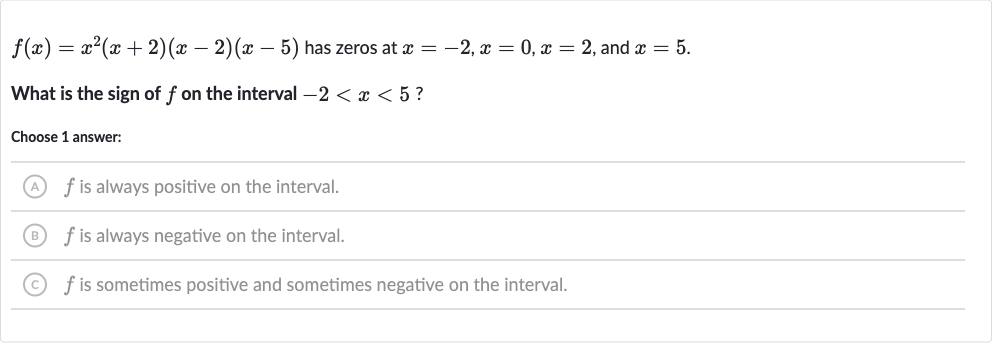Full solution
Q. has zeros at , and .What is the sign of on the interval ?Choose answer:(A) is always positive on the interval.(B) is always negative on the interval.(C) is sometimes positive and sometimes negative on the interval.
- Identify Zeros: has zeros at , , , and . To find the sign of on the interval -2 < x < 5, we need to look at the sign of each factor in the interval.
- Analyze : For , any value of (except ) will give a positive result since squaring a number always results in a positive number.
- Analyze : For , any value of greater than will make this factor positive.
- Analyze : For , any value of greater than will make this factor positive, but since we're looking at the interval -2 < x < 5, this factor will be negative for -2 < x < 2.
- Analyze : For , any value of less than will make this factor negative, which applies to the entire interval -2 < x < 5.
- Calculate Sign -2 < x < 2: Now, let's multiply the signs of each factor together for the interval -2 < x < 2. We have a positive from , a positive from , a negative from , and a negative from . Positive times positive times negative times negative equals positive.
- Calculate Sign 2 < x < 5: Next, for the interval 2 < x < 5, we have a positive from , a positive from , a positive from , and a negative from . Positive times positive times positive times negative equals negative.

